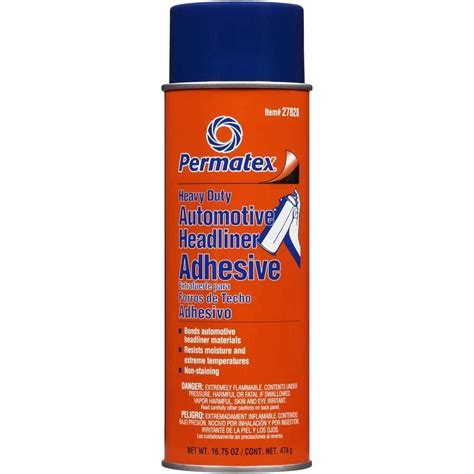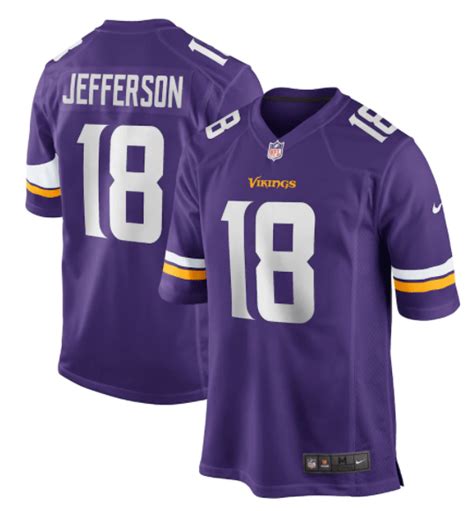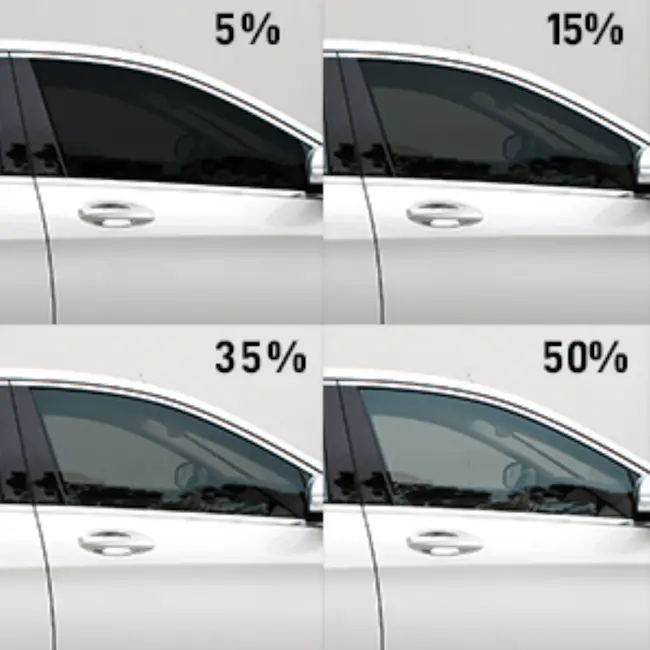The automotive industry relies on a multitude of components to ensure the overall quality and performance of vehicles. One such component, often overlooked but crucial for interior aesthetics and durability, is the automotive headliner. The headliner is the fabric or material that lines the interior of a vehicle's roof, providing a finished look and helping to reduce noise levels. A critical aspect of headliner installation and repair is the adhesive used to secure it in place. Automotive headliner adhesive is specifically designed to bond various materials, such as fabric, foam, and plastic, to the vehicle's roof liner, ensuring a strong, long-lasting attachment that can withstand the elements and the wear and tear of daily use.
Key Points
- The automotive headliner adhesive must be capable of bonding a variety of materials, including fabric, foam, and plastic.
- It needs to provide a strong, durable bond that can withstand temperature fluctuations, humidity, and vibration.
- Adhesives used for headliners are formulated to meet specific automotive standards for performance, safety, and environmental impact.
- The choice of adhesive can significantly affect the ease of installation, the quality of the finish, and the longevity of the headliner.
- Manufacturers and aftermarket suppliers offer a range of adhesives, each with its own set of characteristics, advantages, and applications.
Types of Automotive Headliner Adhesives

There are several types of adhesives used for automotive headliners, each with its own strengths and weaknesses. The most common include acrylic, polyurethane, and epoxy-based adhesives. Acrylic adhesives are known for their flexibility and are often used for applications where some movement between the bonded surfaces is expected. Polyurethane adhesives provide a strong, flexible bond and are commonly used for a wide range of automotive applications, including headliner installation. Epoxy-based adhesives offer exceptional strength and chemical resistance but can be more difficult to work with due to their two-part mixing requirement and longer curing times.
Application Considerations
When selecting an automotive headliner adhesive, several factors must be considered. These include the types of materials being bonded, the environmental conditions the adhesive will be exposed to, and the desired performance characteristics of the bond. For example, adhesives that are resistant to heat, moisture, and vibration are preferred for automotive applications. Additionally, the adhesive should be compatible with the materials used in the headliner and the vehicle’s roof structure to ensure a strong, durable bond. Compatibility testing and adhesive strength testing are crucial steps in the selection process to ensure that the chosen adhesive meets the necessary standards.
| Adhesive Type | Key Characteristics | Common Applications |
|---|---|---|
| Acrylic | Flexible, easy to apply | Fabric and foam headliners |
| Polyurethane | Strong, flexible, resistant to moisture and temperature | General automotive bonding, including headliners and trim |
| Epoxy | High strength, chemical resistant, durable | Applications requiring high strength and resistance to environmental factors |
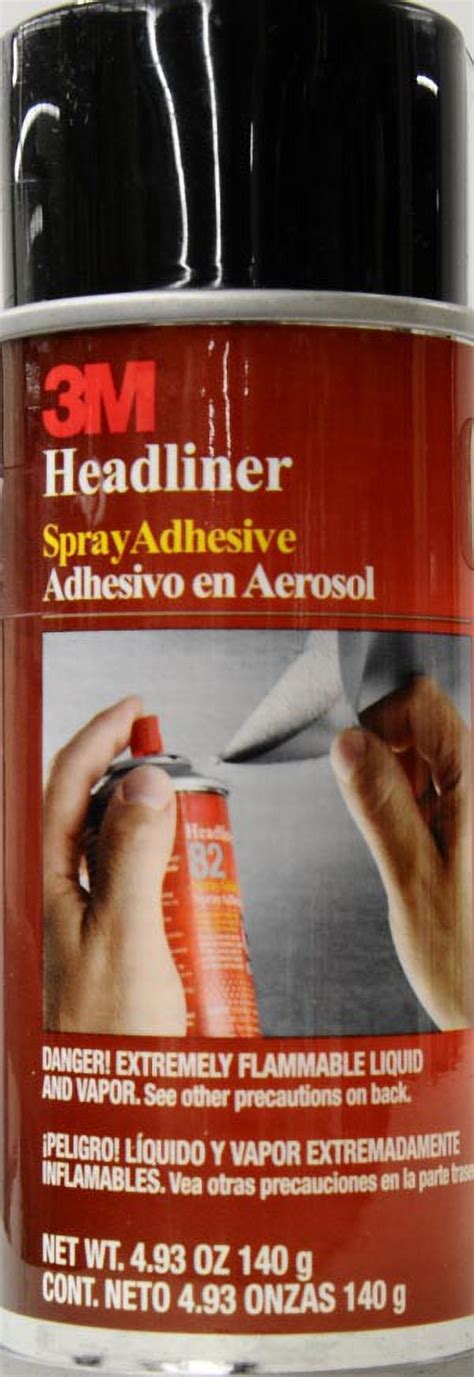
Environmental and Safety Considerations
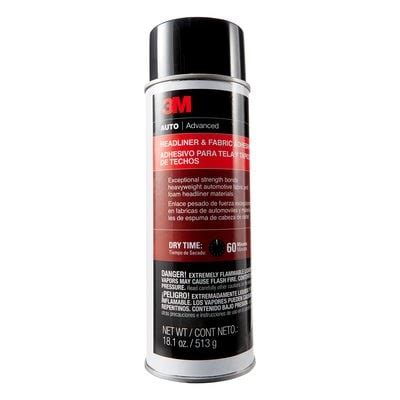
The automotive industry is subject to stringent environmental and safety regulations. Adhesives used for headliner applications must comply with these regulations, which include standards for volatile organic compounds (VOCs), toxicity, and flammability. Many modern automotive adhesives are formulated to be more environmentally friendly, with reduced VOC emissions and the use of non-toxic and non-corrosive ingredients. Additionally, manufacturers must ensure that their adhesives meet safety standards, such as those related to fire resistance and the prevention of harmful emissions during vehicle operation.
Future Developments and Trends
As the automotive industry continues to evolve, with a focus on sustainability, lightweight materials, and advanced technologies, the demand for innovative adhesives that can meet these new challenges is growing. Developments in adhesive technology are expected to focus on enhanced performance, reduced environmental impact, and improved safety. This includes the development of adhesives that can bond new and innovative materials used in vehicle construction, such as carbon fiber and advanced polymers, and adhesives with improved thermal resistance and durability.
What factors should be considered when choosing an automotive headliner adhesive?
+When choosing an automotive headliner adhesive, consider the types of materials being bonded, environmental conditions, desired bond strength, flexibility, and resistance to heat, moisture, and vibration. Compatibility with the headliner and roof materials, as well as compliance with automotive standards for performance, safety, and environmental impact, is also crucial.
How does the preparation of the bonding surface affect the adhesive's performance?
+Proper preparation of the bonding surface, including cleanliness and the removal of contaminants, is essential for achieving a strong and reliable bond. The use of a primer may also be necessary to enhance the bonding process, depending on the adhesive and materials being used.
What are the future trends in automotive headliner adhesive technology?
+Future developments are expected to focus on enhanced performance, reduced environmental impact, and improved safety. This includes the development of adhesives for bonding new materials, such as carbon fiber, and adhesives with improved thermal resistance and durability, all while meeting stringent environmental and safety standards.
In conclusion, the selection and application of automotive headliner adhesives require careful consideration of various factors, including material compatibility, environmental conditions, and performance requirements. As the automotive industry continues to evolve, the demand for innovative, high-performance adhesives that meet the challenges of new materials and technologies will drive advancements in adhesive technology. By understanding the complexities of automotive headliner adhesives and staying informed about the latest developments, manufacturers and technicians can ensure the production of high-quality, durable, and safe vehicles that meet the expectations of consumers and regulatory bodies alike.
